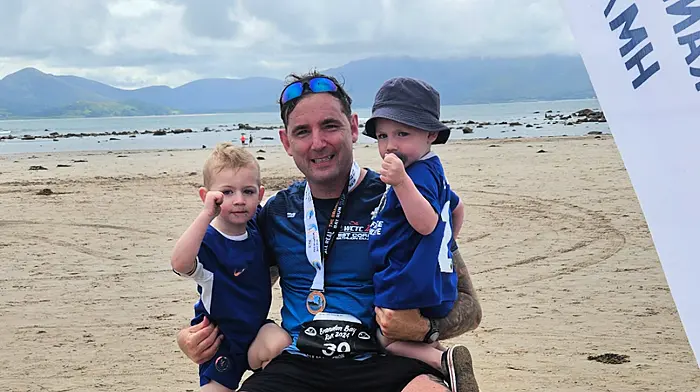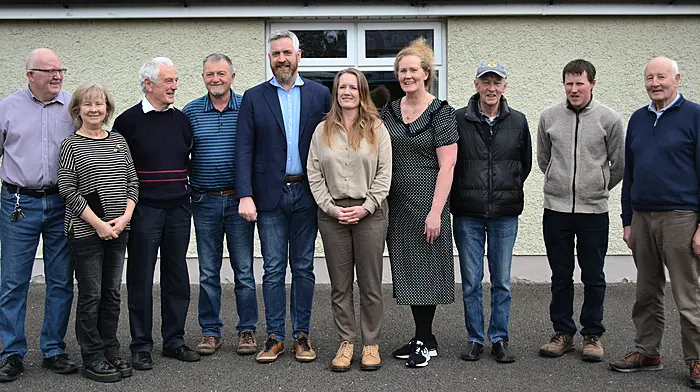TWO very unusual occurrences off our coast this week brought our maritime areas into sharp focus.
Last Saturday afternoon some very bizarre tidal movements set social media alight, with the tides rushing in and out of local harbours at breakneck speed.
Several people contacted this newspaper wondering what was happening. The phenomenon was witnessed at a number of vantage points along the coast, including at Union Hall, Courtmacsherry, Bantry, Reen and Timoleague. There were also sightings of similar events in Wexford, and across the Irish sea in Cornwall and in Wales.
The initial theory was that it was in some way connected with a small earthquake in the Azores off the coast of Portugal, much further south.
Then a theory emerged from an academic, restated in our paper this week, who believes it is a fairly common effect, closely linked with wind events. He said that a squall out in the Atlantic, due to a sudden drop in air pressure, may have created an effect similar to a tsunami.
But fishermen along the coast who witnessed the unusual water movements had never seen their likes before. There were fears that if a swimmer, or indeed someone in a kayak or small boat, had become caught up in it, there could have been some very serious consequences.
Around the same time, the fishing lobby group, the Irish South and West Fish Producers’ Organisation, were gearing up to take on another nation, after hearing that the French were about to commence military activities in the sea off the south west.
The IS&WFPO gained global recognition in January when they took on the Russians and successfully asked them to move their manoeuvres away from their fishing grounds.
This time the French activities were brought forward, to 2am last Tuesday, so our fishermen didn’t have as much time to reconfigure.
At time of going to press, there was no sign of any damage having been done to our fleet, but of course, we do not know what effect such missile activity may have had on our seabed or marine life.
Both of these events came just a few weeks after a group called Fair Seas reminded the public that the government can designate ‘protected marine areas’ around our coasts.
Fair Seas, a coalition of Ireland’s environmental NGOs and networks, launched a report on June 8th – World Oceans Day – identifying potential locations for ‘Marine Protected Areas’ in Irish waters.
The report showed how it would be possible to protect 36% of Ireland’s ocean territory if the will was there.
Ireland’s ‘Marine Protected Areas’ (MPAs) must increase 18-fold by the end of the decade in order to restore critical habitats, safeguard wildlife and address the climate crisis, according to the report. It urged the government to designate a minimum of 30% of Irish waters as Marine Protected Areas by 2030, up from the current figure of 2% which the group says is wholly inadequate. Recent assessments indicate that two-thirds of Ireland’s coastal habitats are in an ‘unfavourable’ condition, with an alarming decline of 90% in numbers of iconic species, such as porbeagle and angel sharks, noted.
MPAs are areas of our seas and coasts legally protected from activities that damage the habitats, wildlife and natural processes. In 2019, the Department of Housing, Local Government and Heritage initiated a process aimed at expanding Ireland’s network of MPAs in the coming years. The Fair Seas campaign initiated this research to help accelerate the conversation.
We are currently in the middle of a major period of construction for offshore windfarms. Some of the work involved in constructing these massive sea structures, and the subsequent maintenance of them, will interfere with the highly fragile breeding and migration patterns of fish and large mammals in our seas – the very mammals which are currently bringing thousands of tourists to our coastline to see these wonderful creatures in their natural habitats.
Fishing bodies are also worried about these massive constructions and the effect they may have on their fishing grounds.
But because wind energy is seen as the great white hope for sustainable energy production, and the great saviour of our economy in the rush for the world to become carbon-neutral, there is little talk of the negative impact of these future giants of our seas.
This week proved how fragile our coasts are – to both natural and man-made events.
We are very slow to grasp the importance of our seas in the wider ecological and environmental debates.
The plea by Fair Seas for the public to start the conversations around protecting our marine areas largely fell on deaf ears.
Maybe it’s time we started those conversations in earnest.








